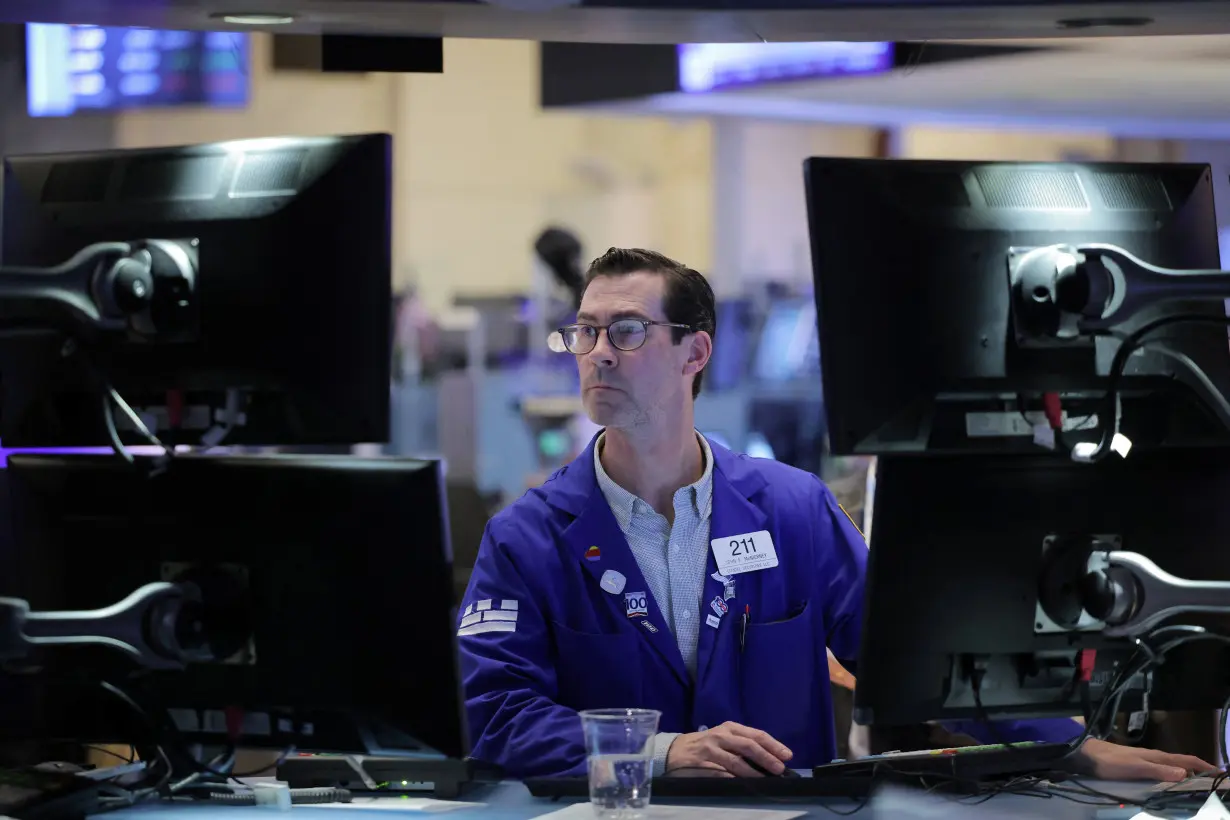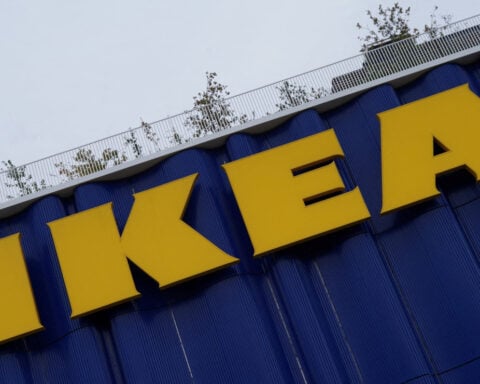By David French
(Reuters) -Wall Street's major indexes ended higher on Friday as investors flocked back to tech megacaps that had triggered broad sell-offs earlier in the week, and inflation data boosted optimism that the Federal Reserve will soon commence cutting interest rates.
For the S&P 500 and Nasdaq Composite, the advances could not completely recoup the ground lost in the two previous sessions, with both indexes ending the week lower for the second consecutive week.
The Dow Jones Industrial Average ended in positive territory for the week. Its Friday gains were aided by industrial conglomerate 3M, which jumped 23% to its largest daily percentage gain in decades after it raised the lower end of its annual adjusted profit forecast.
Five members of the so-called Magnificent Seven rose on Friday, led by Meta Platforms which climbed 2.7%. The two exceptions were Tesla and Alphabet, whose lackluster earnings had triggered Wednesday's big market sell-off. They both fell 0.2%, with Alphabet dropping to its lowest close since May 2.
With further Magnificent Seven earnings due next week, the immediate outlook for markets may hinge on what type of results these companies deliver.
"What we get next week from Apple <AAPL.O>, Microsoft <MSFT.O>, Amazon.com <AMZN.O> and Meta is really going to set the tone for whether that rotation continues and, directionally, where the market goes," said Greg Boutle, head of US equity & derivative strategy at BNP Paribas.
The rotation involves moving out of a set of high-momentum stocks, whose valuations now appear inflated, to underperforming sectors like mid- and small-cap stocks.
This shift seems to have gained momentum in recent weeks, with the small-cap Russell 2000 and S&P Small Cap 600 both advancing to their fourth closing highs of the week.
The Russell 2000 scored its third straight weekly gain in two months and its best three-week run since August 2022.
These economically sensitive small-caps were supported on Friday by the moderate rise in June U.S. prices, which underlined cooling inflation and potentially positions the Fed to start easing policy in September.
Bets on a 25-basis-point cut at the Fed's September meeting held steady at about 88% after the PCE reading, according to CME's FedWatch. Traders still largely expect two rate cuts by December, LSEG data showed.
"We did see (the stable economic data) as beneficial for that broadening trade," said Adam Hetts, global head of multi-asset at Janus Henderson, noting small-caps had outperformed the S&P 500 by more than 10% over the last month.
The broadening trade has also benefited cyclical sectors of the economy. On Friday, all 11 of the S&P sectors were higher, with Industrials and Materials the leading gainers.
On Friday, the S&P 500 gained 59.88 points, or 1.11%, at 5,459.10 points, while the Nasdaq Composite climbed 176.16 points, or 1.03%, to 17,357.88. The Dow Jones Industrial Average rose 654.27 points, or 1.64%, to 40,589.34.
For the week, the Dow gained 0.75%, while the S&P 500 declined 0.82% and the Nasdaq dropped 2.08%.
Among stocks boosted by earnings, Deckers Outdoor jumped 6.3% after it raised its annual profit forecast, while oilfield services firm Baker Hughes climbed 5.8% after beating estimates for second-quarter profit.
Norfolk Southern soared 10.9%, its largest one-day percentage gain since March 2020, after the rail operator reported second-quarter profit above Wall Street estimates thanks to robust pricing.
Medical device maker Dexcom slumped 40.6% after cutting its annual revenue forecast.
Volume on U.S. exchanges was 10.92 billion shares, compared with the 11.61 billion average for the full session over the last 20 trading days.
(Reporting by Ankika Biswas and Lisa Mattackal in Bengaluru and David French in New York; Editing by Saumyadeb Chakrabarty, Pooja Desai and Richard Chang)

 India's navy launches submarine, warships to guard against China's presence in Indian Ocean
India's navy launches submarine, warships to guard against China's presence in Indian Ocean
 UK inflation unexpectedly eases in December, which could reduce pressure in bond markets
UK inflation unexpectedly eases in December, which could reduce pressure in bond markets
 Body count from South African mine siege rises to 60
Body count from South African mine siege rises to 60
 Question on ASEAN stumped Hegseth at Senate hearing. What is it and why is it important?
Question on ASEAN stumped Hegseth at Senate hearing. What is it and why is it important?
 US importers rush in goods from China as Trump tariff threat looms
US importers rush in goods from China as Trump tariff threat looms
 Novak Djokovic breaks a tie with Roger Federer for the most Grand Slam matches in tennis history
Novak Djokovic breaks a tie with Roger Federer for the most Grand Slam matches in tennis history
 China's RedNote: what you need to know about the app TikTok users are flocking to
China's RedNote: what you need to know about the app TikTok users are flocking to
 British author Neil Gaiman denies ever engaging in non-consensual sex as more accusers come forward
British author Neil Gaiman denies ever engaging in non-consensual sex as more accusers come forward








